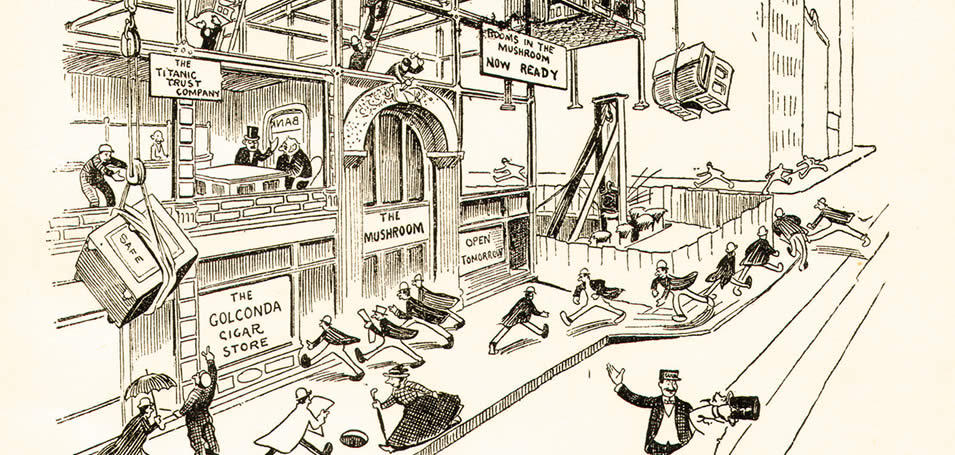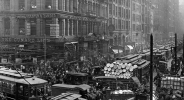

Chicago, 1890s

A Chicago Landmark


Chicago, 1890s

A Chicago Landmark
After the Great Fire, Chicago was uniquely situated for the development of the skyscraper.
Between 1880 and 1890, Chicago’s population jumped from just over 500,000 to almost 1.1 million, and the city was running out of office space. And rather than be known as a hardscrabble hog capital, Chicago sought to rival the great cities of Europe.
Chicago was home to many of the innovations that led to the modern skyscraper, including fireproof steel frames, floating foundations, and elevators. Improved heating, telephony, and lighting also helped make higher buildings feasible.
But not everyone wanted tall buildings. People wondered if elevators were really safe, whether they could withstand strong winds, or how occupants would escape in a fire. Would the buildings block too much light? And some even voiced concerns over what the skyscraper represented about America’s capitalist culture: whether it would make them targets of militant attacks.